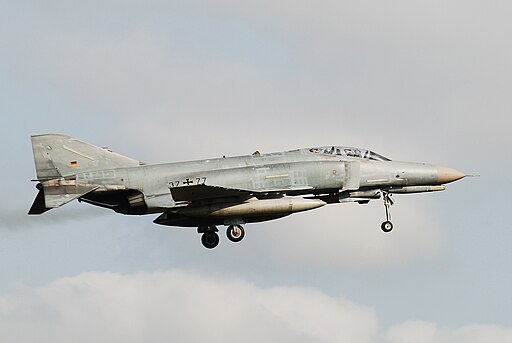The F-4 Phantom fighter bomber became one of the enduring symbols of post-World War II military aviation after its development by McDonnell Aircraft (later McDonnell Douglas). These aircraft became part of military aviation history, serving with distinction across numerous air forces globally – especially their use within the United States Air Force (USAF), United States Navy, and Marine Corps services.
Design and Development
The F-4 Phantom aircraft first entered service during the late 1950s as a fleet defense fighter for U.S. Navy fleet defense duty. Its exceptional performance characteristics and versatile design quickly caught on among other military branches. At over 60-ton max takeoff weight and equipped with two General Electric J79-GE-17A engines giving an overall maximum top speed over Mach 2.2, this aircraft was created to be one of the fastest jets of its era. It became immensely popular and dominated many missions throughout its service career.
The F-4 Phantom was easily identifiable thanks to its distinct two-seat, twin-engine, all-weather, long-range design characterized by swept-back wings and an aggressive profile. It was equipped with air-to-air missiles, air-to-ground missiles, and, later on, a cannon. Furthermore, these capabilities made this aircraft a formidable adversary during any combat scenario.
Operational History
The F-4 Phantom’s operational history matches its specs. First entering service with the United States Navy in 1961, its initial combat missions during the Vietnam War saw it used extensively for air superiority missions and close air support, reconnaissance, and intelligence gathering missions. Renowned for its speed, power, versatility, and resilience against heavy damage while returning safely home, its crews found great comfort knowing this aircraft could endure significant levels of impact without succumbing to crippling losses before eventually coming home for repairs. The F-4 earned great respect among pilots as much as its specifications allowed them.
Phantom pilots earned more air-to-air combat victories during the Vietnam War than any other U.S. aircraft type. Moreover, the F-4 played an essential part in Operation Linebacker II bombing campaigns against North Vietnam that helped end that conflict.
Legacy and Retirement
In the U.S. during the 1980s, F-4 Phantom aircraft gradually faded from frontline service, with other platforms like F-14 Tomcats, F-15 Eagles, and F-16 Fighting Falcons taking its place as principal fighter planes. Yet Phantoms continued serving primarily as target drones or reconnaissance platforms well into 21st-century service.
F-4 Phantom remains active with several nations even after retiring from U.S. service, a testament to its innovative design and capabilities. As it enters its final years of flight service, Phantom continues to draw aviation fans due to its raw power and unmistakable presence.
Overall, the F-4 Phantom is an iconic piece of aviation history representing technological progress and combat experiences during the Cold War period. As such, its legacy will live on in future generations of pilots.
For more insights into the F-4 Phantom and other important military aircraft, visit Aces In Action. Here, you’ll find an amazing piece of artwork by Craig Tinder titled “Tampa Zero One” that commemorates “Triple Ace”, Col. Robin Olds and his double victory on 20 May 1967 during the Vietnam War. The limited edition canvas print even includes an actual fragment from an aluminum, slotted missile panel which seated the AIM-7 Sparrow Missle on the forward belly of an F-4 Phantom II, making it a unique piece of history!
“Tampa Zero One” – F-4 Phantom II Aviation Art Print by Artist Craig Tinder
20 May 1967 – Col. Robin Olds, (“Call Sign: Tampa 01”) led two flights of F-4C Phantom IIs of the 8th Tactical Fighter Wing to provide air cover for a wing of F-105 Thunderchiefs that were en route to bomb the Kep airfield in North Vietnam. While arriving at a well-timed checkpoint, the 8 F-4s were jumped by 16 North Vietnamese MiG 17s in an ensuing battle that lasted nearly 15 minutes. Col. Olds scored two victories over the MiGs and returned safely, albeit on fumes. Col. Robin Olds ended his combat career as a triple ace with 12 victories in World War II and four during Vietnam.
 F-4 Phantom flying during the day
F-4 Phantom flying during the day
To purchase or see similar items, visit here.
Commissioned by Museums, Treasured by Collectors





Share:
The B-1 Bomber: A High-Speed Heavyweight
The P-51 Mustang: The Crown Jewel of World War II Aviation